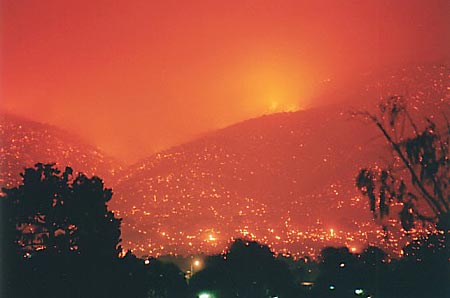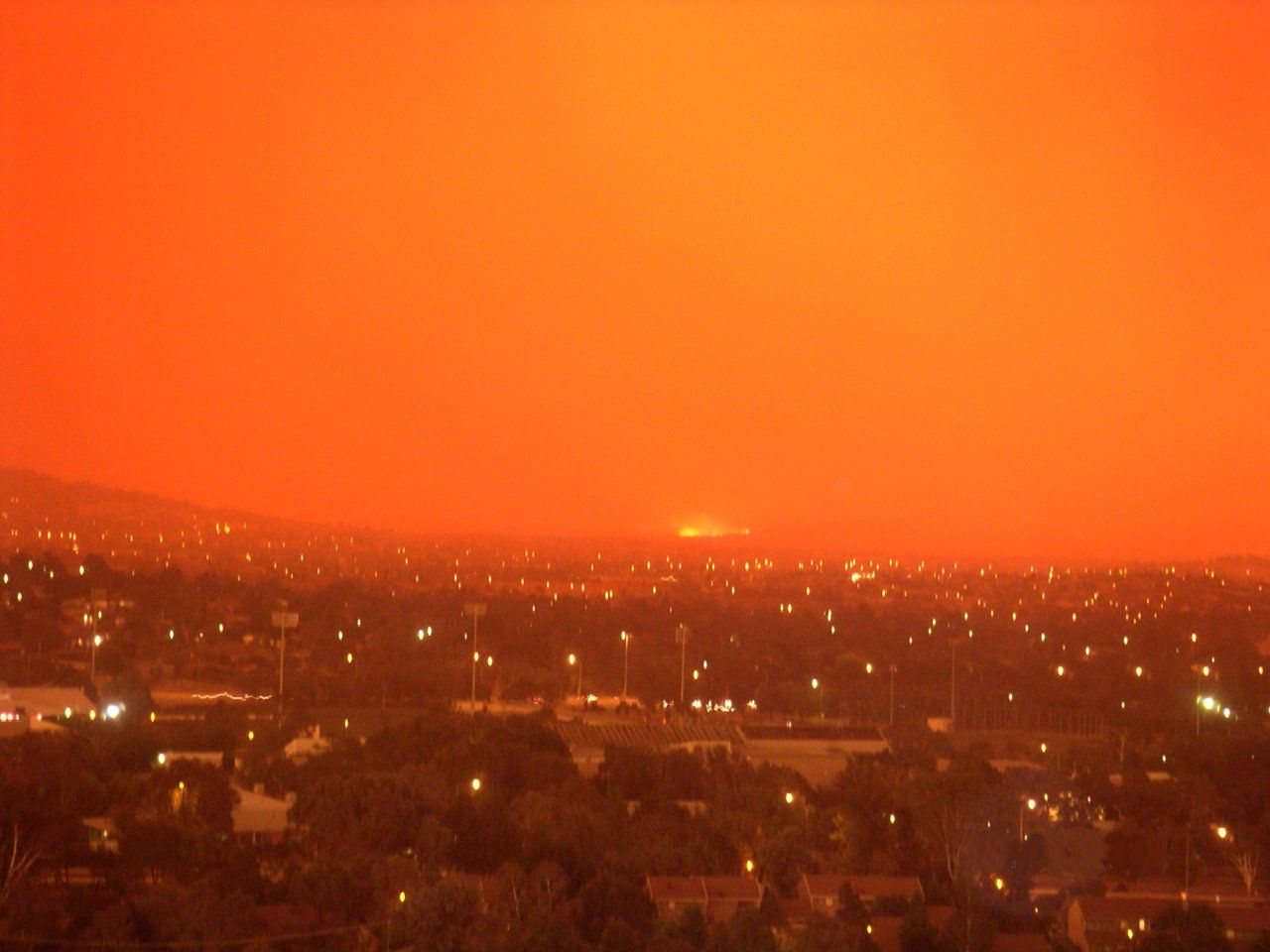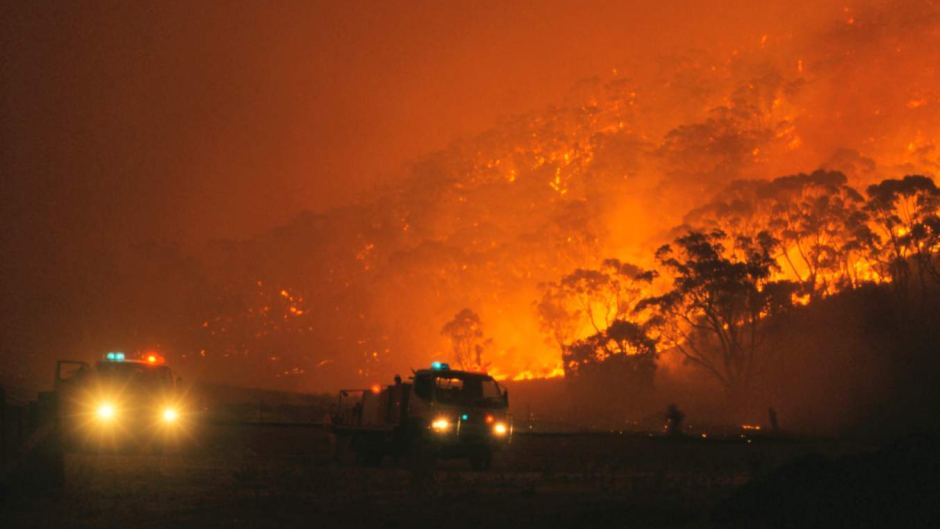2003 Canberra bushfires
The bush fires in Canberra in January 2003, are among the largest known natural disasters in Australia. They caused severe damage to the outskirts of the capital, Canberra, in addition, burned almost the entire growing to 70 % of the area of the Australian Capital Territory (ACT ). The bush fire had raged for a week in the remote wilderness west of the city, then broke through on 18 January 2003, the containment lines and enclosed some neighborhoods. A total of 500 houses were destroyed and four people perished in the flames died before a change in the weather brought the major fire under control. The material damage amounted to about 300 million Australian dollars.
Course
The fires were on 8 January 2003 immediately west of the ACT erupted in the Kosciuszko National Park, as caused by lightning strikes over 150 individual fires, favored by a several weeks lasting high summer dry period. During the first days the bushfire was restricted to a relatively small area. On January 13, crashed a helicopter that had been used to fight fire to the Bendora Dam. To rescue team was also Chief Minister Jon Stanhope, who had informed locally about the development of bushfire.
On January 18, the fire came in Namadgi National Park, Tidbinbilla Nature Reserve and in the Brindabella Ranges west of the city due to heavy winds and high temperatures completely out of control and broke through containment lines. All day long penetrated the bushfires ever closer to the city before. At 14:45 clock called Chief Minister Jon Stanhope state of emergency and at 15:00 clock the fire had reached the edge of town. The residents of vulnerable neighborhoods were asked by the police to leave their homes.
At 16:00 clock stood in the Duffy neighborhood the first houses on fire, soon after, in Holderness. The fierce wind tore down power lines, so that in many parts of the city the power went out. Sparks hitting power lines were responsible in Giralang for more fires. In four schools evacuation centers have been set up. Above the city hung clouds of black smoke and the Parliament House was closed, although it was not directly threatened.
An hour later destroyed houses were reported from the districts Duffy, Giralang, Holder and Rivett, as well as from rural settlements Uriarra and Kambah. The Monaro Highway was blocked. At 17:00 burned in the districts Torrens and more Weston houses, including a fire station. The Canberra Hospital had to switch to emergency generators and emergency treat many patients with smoke inhalation. The fires widened to the districts Curtin and Lyons and many residents were encouraged to evacuate after Queanbeyan. When the emergency command center in Curtin itself came under threat, the army was asked for help.
At 22:00 clock one of the evacuation centers was already full and the three others had almost reached its capacity. From the affected districts looting were reported. Both Prime Minister John Howard and Governor-General Peter Hollingworth changed their plans and went back to Canberra to show solidarity with the residents. The bush fires had indeed peaked, but the situation was not stable at a distance, and also on January 19, on Sunday morning, still burning houses in various parts of town.
Aftermath
On the evening of 19th January turned out that four residents of Duffy had come into the flames died. Hundreds had lost all their belongings. In the media, the lack of preparation and the temporary total confusion among the responsible persons have been criticized. In the weeks following the course of the event was studied in detail in order to investigate the causes and to cope better by similar natural disasters in the future. The data collected showed that 91 % of those buildings that were on fire, were completely destroyed. This suggests that the fire had spread at high speed. The fire damage also numerous uprooted trees were added due to the strong wind.
A particularly serious loss was the almost complete destruction of the renowned Mount Stromlo Observatory of the Australian National University. Five historically significant telescopes were destroyed; the workshops, the library and the main administrative buildings were destroyed by fire. The information required by the University insurance benefits in the amount of 75 million Australian dollars are probably the highest single claim in the history of Australia.
On 18 January 2006, the third anniversary of the fire disaster, was inaugurated a monument near Duffy on the site of the destroyed Stromlo - birch forest. It was commissioned by the Government of the ACT in order to commemorate the destruction and to thank the many organizations and individuals who played an important role in fire fighting and rescue operations. Decorated by a native of Canberra artists Tess Horowitz, Tony Steel and Martyn Jolly monument symbolizes the journey of the day of the fire on the process of reconstruction to honors the memories. The area around the monument is not reforested, but is transformed into a recreational area.










